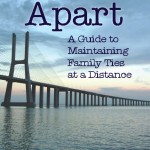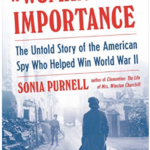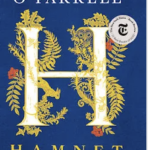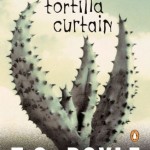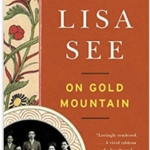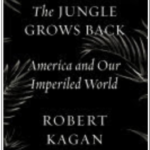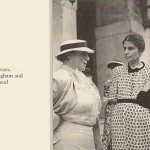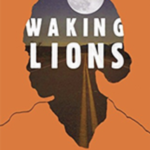Loving Frank by Nancy Horan
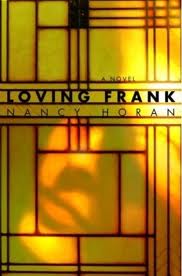 Loving Frank
Loving Frank by Nancy Horan
This is an historical novel based on the love affair of famed American architect Frank Lloyd Wright and a married woman Mamah Cheney. They met when Wright was asked by the young Cheney couple to design a home for them in Oak Park, Illinois, a suburb of Chicago in 1903.
The author appears to have impressively researched the material on the subjects of the novel as described in the afterword and in interviews with her. Whether she has accurately captured their inner thoughts ,conflicts and all the circumstances of their relationship is not as important to me as is the discussion that she is stimulating about marriage, love, loyalty to children, the effect of divorce on children, feminism and the relationship between men and women. This is quite an accomplishment for a first novel.
Mamah Cheney, college educated with a masters degree, writer, fluent in several languages, mother of two small kids, realizes she shouldn’t have married Edwin who is a nice enough devoted hardworking husband. She is now smitten with Frank Lloyd Wright, self centered, creative, brilliant architect who designs buildings to blend with nature. He also has small children and is married to Catherine whom he feels doesn’t understand his special qualities . Mamah and Frank who appear to deeply appreciate one another, fall in love and go off together. Although it is difficult for her, Mamah is able to leave her children to her husband who cares for them with the help of a live- in single sister and a housekeeper. She and Frank live in Europe for awhile and eventually settle in Wisconsin where Frank designs their new residence called Taliesin (from the Welsh word meaning “shining brow” as it is built into the brow of the hillside instead of on top of the hill). Wright is of course is known for his “organic architecture” Ultimately Mamah has some visits with her children but has essentially abandoned them for most of their early childhood. Frank visits his children periodically in Chicago but is basically out of his house living with Mamah in Wisconsin.
The story unfolds mostly through Mamah’s eyes and thoughts. The reader is not only swept up in the story but is given ample opportunity to identify with Mamah and the excitement of her life .She has clearly made a mistake in her decision to originally marry Edwin. She now sees the opportunity to rectify her big false step by living out a life in love with rich fulfillment in so many ways with Frank. The author’s empathy for her is quite palpable in the book as well as in the epigraph she chose for her novel from Goethe, “One lives but once in the world.” At the same time the main character in the book wonders about the decisions that she and Frank have made as well as the implications for their spouses and children. . Many of her own ideas are honed and clarified as she meets Ellen Key,
Swedish feminist and agrees to translate her writings for an American readers. While Mamah strongly agrees with just about everything Key asserts , she did have some qualms with her statement: “The very legitimate right of a free love can never be acceptable if it is enjoyed at the expense of maternal love.”
In the novel and apparently in real life this affair was considered a front page scandal in the Chicago newspapers which of course greatly impacted on the participants. The criteria for a public airing of such an affair may have changed in the past one hundred years. It now appears to have to be a popular movie or television star or a major politician but there is no shortage of such front page stories. As I write this piece today the TIME magazine cover story “Unfaithfully Yours” is examining The marriage of Mark Sanford governor of South Carolina and his wife Jenny, former senator and former presidential hopeful John Edwards and his wife Elizabeth, former governor of NY Eliot Spitzer and his wife Silda and reality TV parents of eight kids Kate and Jon Gosselin. The men in each of these high profile marriages chose to have extra-marital affairs with lesser known women.
The writer of the TIME piece Caitlin Flanagan concludes that there is no other single force causing as much measurable hardship and human misery in this country as the collapse of marriage. She concludes that it hurts children, it reduces mothers’ financial security and it has landed with particular devastation on those who can bear it the least, the nation’s underclass. While the characters in the novel or the high profile people mentioned above don’t fit into this socioeconomic class, few would argue that the impact of divorce probably is magnified as you move down this ladder.
While empathizing with any women’s legitimate wish to be happy and live a fulfilled life as she sees fit, let us keep our eye on the impact on the children. The book keeps returning to Mamah’s feelings and obligation to the children. This was a time before shared custodies, single mothers were becoming more common place , let alone same sex parents. Our modern day recent TIME article quotes a 1994 book Growing up With A Single Parent by Sara McLanahan who studied effects of divorce on children from middle and upper income households. . She concluded that “children who grow up in a household with only one biological parent are worse off on average than children who grow up in a household with both of their biological parents regardless of the parents’ race or educational background.”
Before I recently relocated to California I lived and practiced in Westchester county in New York. One of my colleagues was the outstanding child psychiatrist and psychoanalyst Paulina Kernberg who wrote extensively on children and divorce. She believed divorce, was the second worst trauma a child could undergo, exceeded only by the death of a parent. The psychological scars, she warned, lingered, and in many cases a child was better served living in a loveless or contentious marriage than shuttling between separate households. Perhaps one of the most important recent books giving insight into the impact of divorce on children was The Unexpected Legacy of Divorce written by a renowned San Francisco psychologist Dr. Judith Wallerstein with Julia Lewis and Sandra Blakeslee This was a 25 year study of a group of 131 children whose parents were all going through a divorce. She pointed out among other things that over time these now grown children who usually do not a have a model for a successful relationship have to figure out how to find loving partners and to become good protective parents. She also highlighted how the effect of divorce on a child may not appear until this child is in their late 20’s to early 40s. At this time they can have great fears of loss, conflict and betrayal as they choose their own partners. This may lead to self destructive choices in partners. In other cases of course they can learn from their parent’s mistakes and end up with good marriages. However, I don’t know of any research that has been able to systematically study the effect on children growing up with parents who are unhappily married and resent their own decision to stay together for the children
In the course of my psychiatry practice I have seen many women and men over the years who were contemplating separation, divorce or had been through this process. While it is helpful to be familiar with the above and other and writings, I have found that there are so many variables that it serves no value to generalize in regard to any individual in this situation. Each person brings their own history, background, values and emotional template and we must try our best to help them within this context.
One of the advantages to a person who chooses to get help at this cross road in their life is that we can determine if they have a specific psychiatric condition which if treated will make it much easier for them to negotiate this life crisis and make decisions. For example if a person has an untreated mood disorder such as a major depression or a bipolar disorder there could be intense mood changes which are clouding or influencing their decision making processes. Much more complicated but quite relevant could be certain types of personality disorders or patterns which invariably lead an individual to make repetitive unsuccessful or even destructive choices in their lives. Ideally such a person will be able to enter into therapy for a reasonable amount to time before making important decisions which may be hard to reverse. As in most therapy situations, a good therapist will remain neutral, not let their own personal values unduly influence the patient while allowing an examination of the life crisis . One challenging situation which often requires an exception to this completely neutral stance is when the patient ( most likely a women ) is the victim of clear repetitive abuse by her partner and requires positive affirmative encouragement and support by the therapist. to step away from it.
In conclusion I believe “Loving Frank” is an excellent book. It not only tells the story of two very interesting people which ends with the tragic death of one of them, but it stimulates reflection on a whole myriad of personal issues which were as relevant 100 years ago as they are today.

